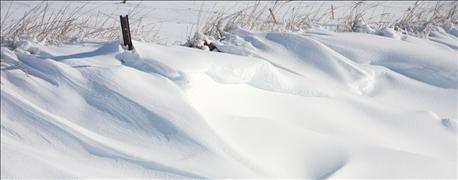
Expect a milder than normal winter with less snow, especially in the northern two-thirds of Indiana. That's the story, and ag climatologists at the National Climate Prediction Center are staying with it, at least for now.
Related: Many things ride on expected El Nino conditions
Nothing in this life is guaranteed. While El Nino winters, and apparently we're in the grips of a strong El Nino event, usually produce mild winters in this part of the world, there is a notable exception. Let's look.
The poster child for a warmer-than-normal, milder-than-normal winter according to weather gurus, during a strong El Nino event, is 1997-1998. Temperatures during that winter were above average across the Great Lakes basin, reaching into Indiana as well.
However, there was also the winter of 1965-66. There was also a strong El Nino event underway that year. But it wasn't a mild winter. Instead, records show that temperatures were below average for the entire winter across a majority of the Great Lakes basin.
Obviously, these two events, both strong El Nino events, produced very different impacts on temperature. Impacts on snow amounts also varied.
Forecasters are sticking with the milder winter call for 2015-2016 right now. So how do you explain away 1965-66?
That was when I was a young teenager on a small dairy farm, and I remember snow drifts in the '60s in central Indiana that seemed high as a mountain. Corrected to account for my perspective as a shorter person then, they were still as high as fence posts. There were still fences then.
Climatologists explain it in language buried deep in an article. Those things apparently can happen if other factors that control winter weather line up differently than when El Nino delivers a mild winter. El Nino usually overrides these other weather "forcing functions," but not always. They include several oscillations, which refer to huge patterns of air flow. Among them are the Pacific Decadal Oscillation, the north Atlantic Oscillation and the Arctic Oscillation.
Related: El Nino could bring warmer, drier winter over northern two-thirds of Indiana
That may be more than you want to know. Boiled down, it's simple. Mother Nature is in control. It looks like a mild winter ahead, but don't bet the farm on it!
About the Author(s)
You May Also Like




